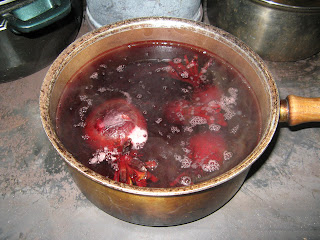Coastal BC Plants: Yellow Pond Lily
 There are several varieties of Pond Lily (often called Water Lily) in British Columbia on ponds and in quiet corners of larger lakes.
There are several varieties of Pond Lily (often called Water Lily) in British Columbia on ponds and in quiet corners of larger lakes.Yellow Pond Lilies are floating perennial herbs that are held in place by rhizomes on the lake bottom. Long thin stems allow the flat leaves to reach the surface. There they float in masses to gather sunlight and reproduce.
When kept in check by natural conditions, pests and predators, they are lovely. But on Cranberry Lake in Powell River they are a problem. As the water flow has decreased, the lilies have proliferated. Remediation isn't easy or cheap, but homeowners are working to see their lake restored to it's original beauty.
Wayne and I were paddling our kayak on Nanton Lake at the end of summer. The water was so clear that you could see this Pond-Lily plant all the way down to where its stems reached lake bottom under which their large rhizomes anchor them down and extract nutrients.

 First Nations people used Pond-Lily rhizomes for medicinal purposes to treat illnesses such as colds, tuberculosis, ulcers, heart conditions, cancer, and contraception. Heated leaves and roots were used as a topical for chest pains and rheumatism. -- Margy
First Nations people used Pond-Lily rhizomes for medicinal purposes to treat illnesses such as colds, tuberculosis, ulcers, heart conditions, cancer, and contraception. Heated leaves and roots were used as a topical for chest pains and rheumatism. -- Margy


































































